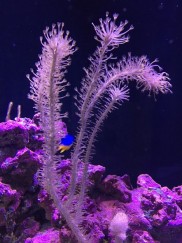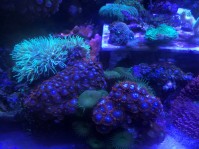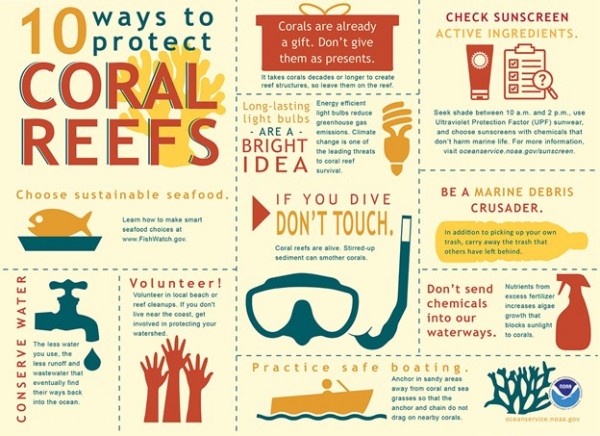Coral Reef Awareness Week!
 This week (July 19-24) is Coral Reef Awareness Week! Our animal care team here at the Rosamond Gifford Zoo would like to share some knowledge about corals and what makes them so special -- and about some of the corals we care for at the zoo!
This week (July 19-24) is Coral Reef Awareness Week! Our animal care team here at the Rosamond Gifford Zoo would like to share some knowledge about corals and what makes them so special -- and about some of the corals we care for at the zoo!
Corals are not plants, they are animals! Unlike plants, corals cannot make their own food and rely on a symbiotic relationship, or partnership, with an algae called zooxanthellae that lives inside corals and helps them to get nutrients. In exchange, the coral protect the zooxanthellae. Different types of corals grow together to create a reef! The National Oceanic and Atmospheric Administration (NOAA) reports that coral reefs help support more marine species than any other marine environment. They also protect shorelines from upcoming storms and floods! You can learn more about corals and reefs at https://oceanservice.noaa.gov/education/tutorial_corals/coral01_intro.html.
Corals are typically split into two categories: Large Polyp Stoney, or LPS, and Small Polyp Stony, or SPS. Large Polyp Stony corals have soft, squishy bodies and tend to bend and move with currents. Here at the zoo we have a few species of LPS including Frog Spawn Coral (Euphyllia divisa), Sea Plume (Pseudopterogorgia sp.), and many of our anemone species like the Swimming Anemone (Boloceroides mcmurrichi). Some of these soft corals help to provide a home for fish like the Percula Clownfish (Amphiprion percula).
 Small Polyp Stony corals are hard corals that help to build up coral reefs! These corals live for a long time. They have tiny, squishy polyps that grow and secrete calcium carbonate that will harden and attach to rock or other dead polyps. This cycle of growth, secretion and attachment helps grow these hard corals larger and larger until they form the structure of gigantic coral reefs! Learn more about this process at https://oceanservice.noaa.gov/education/tutorial_corals/coral03_growth.html.
Small Polyp Stony corals are hard corals that help to build up coral reefs! These corals live for a long time. They have tiny, squishy polyps that grow and secrete calcium carbonate that will harden and attach to rock or other dead polyps. This cycle of growth, secretion and attachment helps grow these hard corals larger and larger until they form the structure of gigantic coral reefs! Learn more about this process at https://oceanservice.noaa.gov/education/tutorial_corals/coral03_growth.html.
Here at the zoo, we have a number of SPS including Green Stylo (Stylophora pistillata), Cali Tort (Acropora tortuosa) and Leaf Plate Montipora (Montipora capricornis).
Stay tuned for more on corals during Coral Reef Awareness Week!
Coral Bleaching

Coral Bleaching/ Photo by WWF.org
Corals, as mentioned previously, live in partnership with an algae called zooxanthellae. Zooxanthellae help the corals by providing them with oxygen and wastes that the corals use for food, and the coral provides the zooxanthellae with shelter and waste it uses for photosynthesis. Coral are important indicators of ocean health -- When corals are thriving, the ecosystem is thriving!
But over the last half-century, large events of coral death, or coral bleaching, have occurred. This is when large amounts of corals start to die and turn white as the zooxanthellae within them are expelled. Many things can cause a coral to bleach, including ocean acidification and rising water temperatures, which result from climate change. This leaves the corals more susceptible to disease and death, which poses a serious problem when so many different species of marine life rely on coral reefs as their home!
Learn more about coral bleaching at https://oceanservice.noaa.gov/facts/coral_bleach.html
Check out this graphic to learn ways you can help corals to survive!



